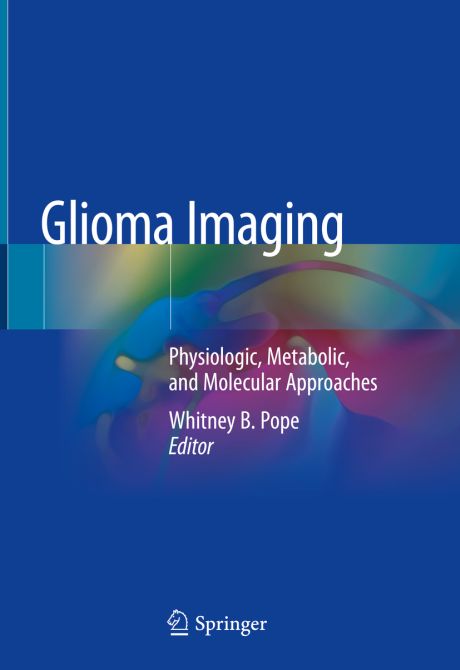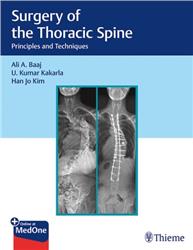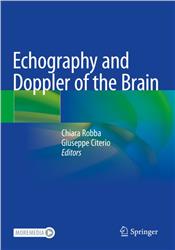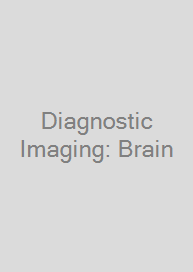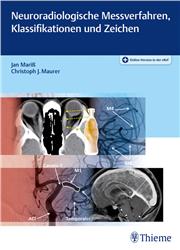Glioma Imaging
Physiologic, Metabolic, and Molecular Approaches
| Auflage | 2020 |
| Seiten | 286 pp., 109 illus., 69 tab. |
| Verlag | Springer |
| ISBN | 9783030273583 |
| Artikel-Nr. | 567070 |
Lieferzeit ca. 5 Werktage
Produktbeschreibung
This book covers physiologic, metabolic and molecular imaging for gliomas. Gliomas are the most common primary brain tumors. Imaging is critical for glioma management because of its ability to noninvasively define the anatomic location and extent of disease. While conventional MRI is used to guide current treatments, multiple studies suggest molecular features of gliomas may be identified with noninvasive imaging, including physiologic MRI and amino acid positron emission tomography (PET). These advanced imaging techniques have the promise to help elucidate underlying tumor biology and provide important information that could be integrated into routine clinical practice.
The text outlines current clinical practice including common scenarios in which imaging interpretation impacts patient management. Gaps in knowledge and potential areas of advancement based on the application of more experimental imaging techniques will be discussed. In reviewing this book, readers will learn:
current standard imaging methodologies used in clinical practice for patients undergoing treatment for glioma and the implications of emerging treatment modalities including immunotherapy
the theoretical basis for advanced imaging techniques including diffusion and perfusion MRI, MR spectroscopy, CEST and amino acid PET
the relationship between imaging and molecular/genomic glioma features incorporated in the WHO 2016 classification update and the potential application of machine learning
about the recently adopted and FDA approved standard brain tumor protocol for multicenter drug trials
of the gaps in knowledge that impede optimal patient management and the cutting edge imaging techniques that could address these deficits
Inhaltsverzeichnis
1. Indications and limitations of conventional imaging - current clinical practice in the context of standard therapy Raymond Y. Huang, Patrick Y. Wen (patrick_wen@dfci.harvard.edu ) 2. Surrogates for disease status - contrast enhancement including limitations of pseudoprogression and pseudoresponse Elke Hattingen 3. The Relationship Between Biological and Imaging Characteristics in Enhancing and Nonenhancing Glioma Janine M. Lupo, Javier E. Villanueva-Meyer 4. Contrast-Enhanced T1-Weighted Digital Subtraction for Increased Lesion Conspicuity and Quantifying Treatment Response in Malignant Gliomas Benjamin M. Ellingson 5. Advanced physiologic imaging: perfusion. Theory and applications Philipp Kickingereder, Ji Eun Park, Jerrold L. Boxerman 6. Advanced physiologic imaging: diffusion. Theory and applications Peter S. LaViolette 7. Parametric Response Map (PRM) Analysis Improves Response Assessment in Gliomas Michael Cardenas, Craig J. Galban, Thomas L. Chenevert, Michelle Miller-Thomas, Brian D. Ross, Christina Tsien 8. Review of WHO 2016 changes to classification of gliomas; incorporation of molecular markers Derek R. Johnson, Caterina Giannini , Timothy J. Kaufmann 9. Imaging markers of Low Grade Diffuse Glioma Melanie A. Morrison, Adam D. Waldman 10. CEST, pH and glucose imaging as markers for hypoxia and malignant transformation Daniel Paech, Alexander Radbruch 11. MRS for D-2HG detection in IDH mutant glioma Ovidiu C. Andronessi, Tracy T. Batchelor, Daniel P. Cahill 12. C-13 hyperpolarized MR spectroscopy for metabolic imaging of brain tumors Pavithra Viswanath, Yan Li, Sabrina M. Ronen 13. FET and FDOPA PET imaging in glioma Norbert Galdiks, Philipp Lohmann, Francesco Cicone, Karl-Josef Langen 14. Imaging genomics Cymon N. Kersch, Ramon F. Barajas 15. Radiomics and machine learning Julie Ferris, Peter D. Chang, Daniel S. Chow 16. Immunotherapy and Gliomas Elise Wang, Robert J. Young, Ankush Bhatia 17. The path forward -The standardized Brain Tumor Imaging Protocol (BTIP) for Multicenter Trials Benjamin M. Ellingson, Marion Smits
The text outlines current clinical practice including common scenarios in which imaging interpretation impacts patient management. Gaps in knowledge and potential areas of advancement based on the application of more experimental imaging techniques will be discussed. In reviewing this book, readers will learn:
current standard imaging methodologies used in clinical practice for patients undergoing treatment for glioma and the implications of emerging treatment modalities including immunotherapy
the theoretical basis for advanced imaging techniques including diffusion and perfusion MRI, MR spectroscopy, CEST and amino acid PET
the relationship between imaging and molecular/genomic glioma features incorporated in the WHO 2016 classification update and the potential application of machine learning
about the recently adopted and FDA approved standard brain tumor protocol for multicenter drug trials
of the gaps in knowledge that impede optimal patient management and the cutting edge imaging techniques that could address these deficits
Inhaltsverzeichnis
1. Indications and limitations of conventional imaging - current clinical practice in the context of standard therapy Raymond Y. Huang, Patrick Y. Wen (patrick_wen@dfci.harvard.edu ) 2. Surrogates for disease status - contrast enhancement including limitations of pseudoprogression and pseudoresponse Elke Hattingen 3. The Relationship Between Biological and Imaging Characteristics in Enhancing and Nonenhancing Glioma Janine M. Lupo, Javier E. Villanueva-Meyer 4. Contrast-Enhanced T1-Weighted Digital Subtraction for Increased Lesion Conspicuity and Quantifying Treatment Response in Malignant Gliomas Benjamin M. Ellingson 5. Advanced physiologic imaging: perfusion. Theory and applications Philipp Kickingereder, Ji Eun Park, Jerrold L. Boxerman 6. Advanced physiologic imaging: diffusion. Theory and applications Peter S. LaViolette 7. Parametric Response Map (PRM) Analysis Improves Response Assessment in Gliomas Michael Cardenas, Craig J. Galban, Thomas L. Chenevert, Michelle Miller-Thomas, Brian D. Ross, Christina Tsien 8. Review of WHO 2016 changes to classification of gliomas; incorporation of molecular markers Derek R. Johnson, Caterina Giannini , Timothy J. Kaufmann 9. Imaging markers of Low Grade Diffuse Glioma Melanie A. Morrison, Adam D. Waldman 10. CEST, pH and glucose imaging as markers for hypoxia and malignant transformation Daniel Paech, Alexander Radbruch 11. MRS for D-2HG detection in IDH mutant glioma Ovidiu C. Andronessi, Tracy T. Batchelor, Daniel P. Cahill 12. C-13 hyperpolarized MR spectroscopy for metabolic imaging of brain tumors Pavithra Viswanath, Yan Li, Sabrina M. Ronen 13. FET and FDOPA PET imaging in glioma Norbert Galdiks, Philipp Lohmann, Francesco Cicone, Karl-Josef Langen 14. Imaging genomics Cymon N. Kersch, Ramon F. Barajas 15. Radiomics and machine learning Julie Ferris, Peter D. Chang, Daniel S. Chow 16. Immunotherapy and Gliomas Elise Wang, Robert J. Young, Ankush Bhatia 17. The path forward -The standardized Brain Tumor Imaging Protocol (BTIP) for Multicenter Trials Benjamin M. Ellingson, Marion Smits

Bleiben Sie informiert!
Melden Sie sich für den frohberg.de-Newsletter an und nutzen Sie jetzt Ihre Vorteil:- Willkommens-Dankeschön: Beatmungsmaske Rescue Me
- Aktuelle Neuerscheinungen und Empfehlungen
- Exklusive Angebote und Kongress-Highlights
